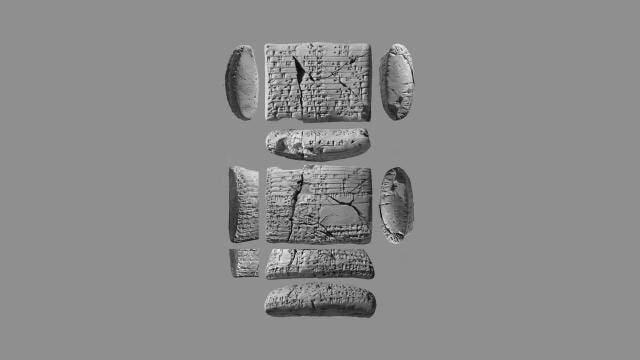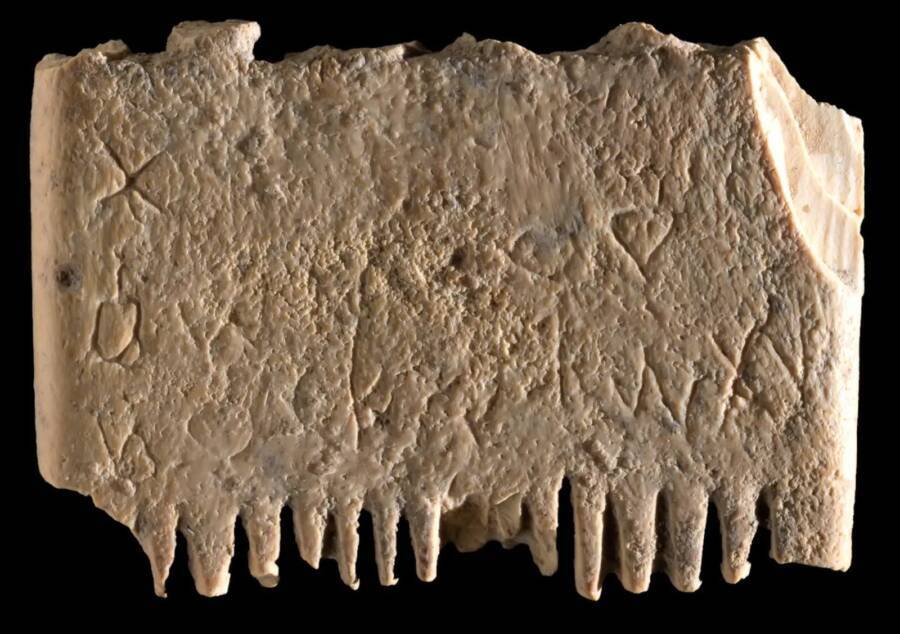Found in Iraq, the tablets uncover the secrets of a "lost" Canaanite language that bears strong similarities to ancient Hebrew.

David I. Owen/Cornell UniversityAncient clay tablets detailing the cryptic Amorite language.
About 30 years ago, two ancient tablets were discovered in Iraq during the Iran-Iraq war. They eventually found their way into a collection in the United States, where they remained unstudied and mostly forgotten — until 2016, when they attracted the attention of two scholars.
Very little was known about the tablets at the time. But researchers Manfred Krebernik and Andrew R. George began meticulously studying them and soon came to an incredible realization: The tablets featured a translation of Amorite, a mysterious member of the Canaanite language family that had been “lost” for centuries and bears striking similarities to ancient Hebrew.
Originally from Canaan, an area that is roughly compromised of modern-day Syria, Israel, and Jordan, the Amorite people spoke a language that eventually was overshadowed by other, more popular languages of Ancient Mesopotamia such as Akkadian, Aramaic, and Hebrew.
The tablets are thought to be nearly 4,000 years old and record not only words but complete phrases and sentences in the Amorite language. Prior to the tablets’ discovery, there was very little information about this language, or even evidence that it existed.
“Our knowledge of Amorite was so pitiful that some experts doubted whether there was such a language at all,” Krebernik and George told Live Science. “The tablets settle that question by showing the language to be coherently and predictably articulated, and fully distinct from Akkadian.”
Similar to the Rosetta Stone, the Amorite tablets feature a comparative translation of words and phrases. Researchers were able to identify one of the tablets’ two languages as Akkadian. As many of the studied texts from this region and time period were written in Akkadian, scholars were familiar enough with the language to try to decypher phrases in the second language.
Initially, they struggled to recognize the mystery language, though they were able to determine that it belonged to the West Semitic language family, which includes Aramaic and Hebrew. Researchers spent years examining its structure and grammar, and finally identified it as Amorite after comparing it to what few other examples they had.

Dafna Gazit, Israel Antiquities Authority/APAn ancient comb containing the first-known written sentence in Canaanite, the language family in which Amorite is included.
After this revelation, the tablet presented the researchers with a wealth of knowledge about the Amorite language.
“The two tablets increase our knowledge of Amorite substantially, since they contain not only new words but also complete sentences, and so exhibit much new vocabulary and grammar,” the researchers told Live Science.
The researchers hypothesized that Akkadian-speaking Babylonian scribes may have created the tablets as an “impromptu exercise born of intellectual curiosity.” Other scholars like Yoram Cohen, an associate professor of Assyriology at Tel Aviv University in Israel, theorize that the tablets may have served as a “guidebook” for ancient Akkadian speakers looking to learn Amorite.
The phrases on the tablets include greetings, comparisons between Mesopotamian gods and Amorite gods, and more.
“There are phrases about setting up a common meal, about doing a sacrifice, about blessing a king,” Cohen told Live Science. “There is even what may be a love song… It really encompasses the entire sphere of life.”
In the 2022 published study on the tablets, researchers note that they may provide a better understanding of the Amorite religious pantheon, as well as a possible pastoral calendar system.
Notably, many of the phrases in Amorite on the tablets bear a striking resemblance to Hebrew, despite the earliest written record of Hebrew dating about 1,000 years after the two tablets were made, and Cohen says most scholars believe Hebrew developed from Amorite.
“In this text, which is very, very ancient, words appear that anyone who knows Hebrew will immediately recognize. You don’t have to be a linguist to understand the connection to Hebrew,” Cohen told Haaretz. “Basically, we’re looking at our forefathers here.”
Now, this discovery may aid researchers in mapping the linguistic evolution between the two languages.
“It stretches the time when these [West Semitic] languages are documented,” Cohen said. “Linguists can now examine what changes these languages have undergone through the centuries.”
Now that you’ve read about the decryption of the ancient Amorite language, learn about some of the most baffling mysteries from the ancient world. Then, read about how the Rosetta Stone unlocked the secrets of ancient Egyptian hieroglyphics.





